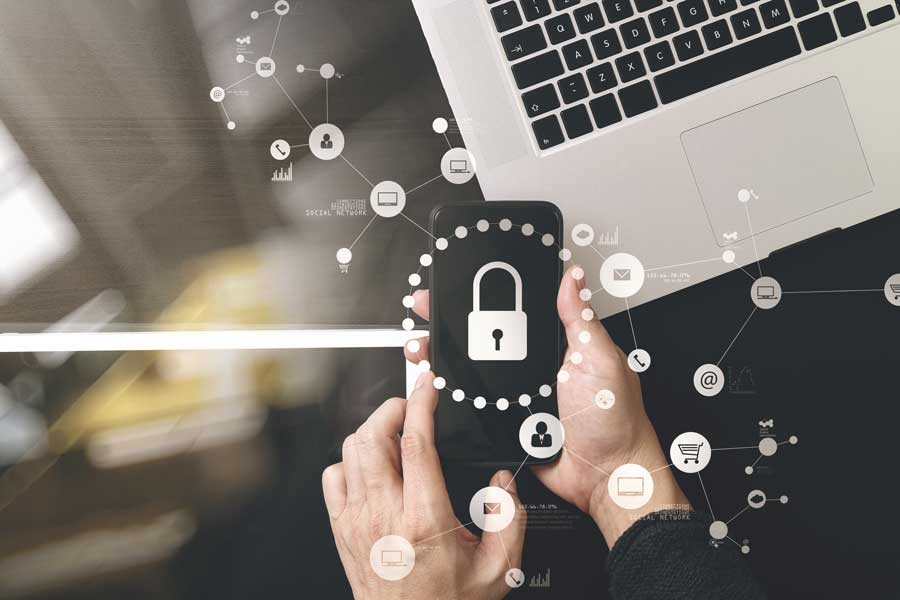How to Protect Your Online Accounts with Two-Factor Authentication?
In today’s digital world, passwords alone are no longer enough to keep your online accounts secure. Cyber threats are more advanced than ever, and hackers can often crack weak or reused passwords in minutes. That’s where two-factor authentication (2FA) comes in—a simple yet powerful layer of protection that can help keep your personal data safe from unauthorized access. Whether you’re managing emails, bank accounts, or social media profiles, enabling 2FA can dramatically reduce your chances of becoming a victim of cybercrime.
What Is Two-Factor Authentication?
Two-factor authentication is a security feature that requires you to provide two different forms of identification to access your account. The first is usually your password, and the second is a temporary code or confirmation sent to your mobile device, email, or generated through an app. This second step acts as a digital lock that only you can unlock, even if someone else has stolen your password.
There are different types of 2FA methods, including SMS codes, authenticator apps, email verifications, hardware tokens, and biometric confirmation. Each of these adds an extra layer of protection because hackers would need access to both your password and your second factor to break into your account.
Why You Should Use Two-Factor Authentication
Using two-factor authentication significantly enhances your security. Passwords can be compromised through phishing emails, data breaches, keyloggers, or even brute-force attacks. If you rely only on a password, a hacker gaining access could mean total control of your account. With 2FA enabled, a password alone isn’t enough.
Even if someone does manage to steal your password, they would still need your second factor—like a one-time code sent to your phone or an approval through an app—to actually log in. This makes your accounts much harder to hack, and it gives you time to change your password if you get notified about an unauthorized login attempt.
How Two-Factor Authentication Works
When you enable 2FA on an account, the login process changes slightly. First, you’ll enter your username and password like usual. Then, depending on the 2FA method you’ve chosen, you’ll receive a prompt to enter a second verification code or approve the login.
For example, if you’re using a smartphone app like Google Authenticator, the app will generate a time-sensitive code that changes every 30 seconds. You’ll need to enter that code within the allowed time to complete the login. Some services may also offer a push notification that lets you tap “Approve” to confirm that you’re trying to log in.
Most 2FA systems also allow you to mark a device as trusted. This means you won’t have to complete the second step every time you log in from that device, which makes daily use more convenient without sacrificing security.
Popular Two-Factor Authentication Methods
There are several different types of two-factor authentication available. SMS-based codes are the most familiar method for many people. After you enter your password, the service sends a one-time code to your registered phone number via text message. This is easy to use, but it’s not the most secure since SMS messages can be intercepted or hijacked through SIM swapping.
A better alternative is using an authenticator app like Google Authenticator, Authy, or Microsoft Authenticator. These apps generate time-based one-time codes (TOTP) that are more secure than SMS and don’t require an internet or mobile signal to work.
Some platforms now offer biometric authentication—like fingerprint or facial recognition—as a second factor, especially on mobile devices. Others allow for hardware keys like YubiKeys, which are physical USB devices you plug into your computer to confirm your identity.
How to Set Up Two-Factor Authentication
Setting up 2FA usually takes just a few minutes. Start by logging into the account you want to protect and going to its security or account settings. Look for an option labeled “Two-Factor Authentication,” “2-Step Verification,” or “Login Security.” Select it and follow the prompts to set up your preferred second factor.
Most services will walk you through the process of linking your mobile number or scanning a QR code with your authenticator app. Be sure to save any backup codes provided during the setup process. These are crucial in case you lose your phone or can’t access your usual 2FA method.
It’s also a good idea to enable 2FA on your most sensitive accounts first, such as your primary email, banking apps, and cloud storage accounts. These accounts often serve as recovery methods for other services, so securing them adds extra protection across the board.
What to Do If You Lose Access to Your Second Factor
Losing access to your phone or authentication device can be stressful, especially if you’ve locked yourself out of important accounts. That’s why it’s important to plan ahead. Most services provide backup codes when you first enable 2FA—store them in a secure place like a password manager or print them out and keep them in a safe location.
Some platforms also allow you to set up multiple 2FA methods. For instance, you might register both an authenticator app and a backup email or mobile number. This provides additional recovery options in case you lose access to your main device.
If you’re locked out and didn’t save your backup codes, you’ll need to contact the service’s support team. You may be required to verify your identity through email, ID verification, or answering security questions to regain access.
Common Misconceptions About Two-Factor Authentication
One common myth is that two-factor authentication is too complicated or inconvenient to use. In reality, most 2FA methods add only a few seconds to the login process and offer a major improvement in security.
Another misconception is that 2FA is unnecessary if you have a strong password. While strong passwords are important, they can still be stolen or leaked. Two-factor authentication acts as your safety net in case that happens.
Some people also believe that SMS-based 2FA is completely safe. While it’s better than no protection at all, it’s not the most secure option. Whenever possible, opt for an authenticator app or hardware key for greater peace of mind.
Making Two-Factor Authentication Part of Your Security Routine
To get the most benefit from 2FA, make it part of your overall online security strategy. Use a password manager to create and store strong, unique passwords for each account. Enable 2FA on all services that offer it, especially financial apps, cloud services, email accounts, and social media.
Regularly review your account activity and check your recovery options to make sure they’re up to date. Avoid using the same mobile number or recovery email across all accounts, as this can be a point of vulnerability.
Conclusion: Take Control of Your Online Security
Two-factor authentication is one of the simplest and most effective ways to protect your online accounts. In a world full of digital threats, taking this extra step can make all the difference between staying safe and becoming a victim. Whether you’re a casual internet user or someone who manages sensitive data, enabling 2FA is a smart move that shows you’re serious about your security.
Frequently Asked Questions (FAQ)
Q1: What exactly is two-factor authentication (2FA)?
Two-factor authentication (2FA) is a security method that requires you to verify your identity using two different forms of credentials—typically your password and a second code sent to or generated by a device you own.
Q2: Is 2FA necessary if I already use strong passwords?
Yes. Even strong passwords can be leaked or stolen. 2FA adds another layer of protection, making it much harder for unauthorized users to access your accounts even if they have your password.
Q3: What’s the best type of 2FA method to use?
Authenticator apps like Google Authenticator or Authy are generally more secure than SMS codes. Hardware keys such as YubiKey offer even higher security, especially for sensitive accounts.
Q4: What if I lose access to my phone or 2FA device?
Most platforms provide backup codes or allow multiple 2FA options. It’s important to save these backup codes in a secure place during setup to recover access if needed.
Q5: Can 2FA be hacked or bypassed?
While no system is 100% foolproof, 2FA drastically reduces the risk of unauthorized access. Most attacks target accounts without 2FA or those using weaker methods like SMS-only authentication.
Q6: How do I know which of my accounts offer 2FA?
Check the account’s settings under security or privacy. You can also visit websites like 2fa.directory that list services supporting 2FA.
Q7: Will I need to enter the 2FA code every time I log in?
Usually, you’ll be prompted for 2FA only when logging in from a new device or location. You can often mark trusted devices to reduce how frequently you’re asked.



